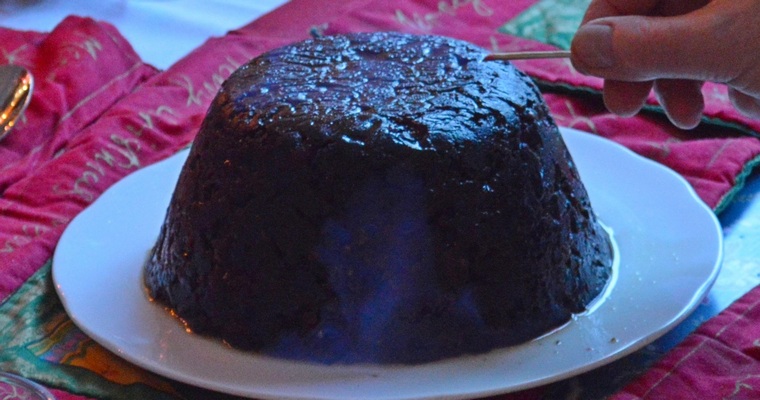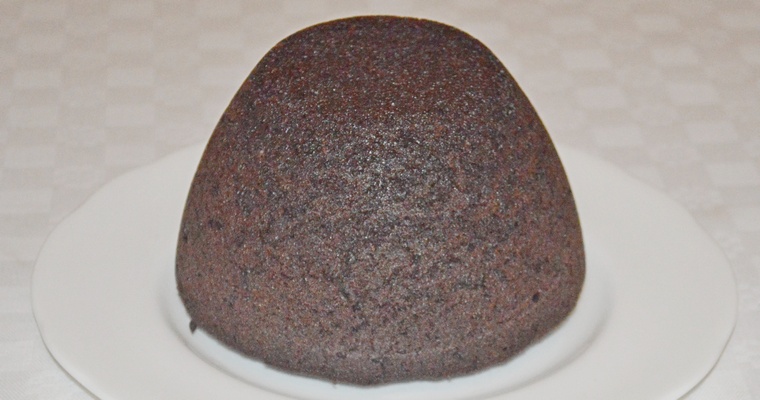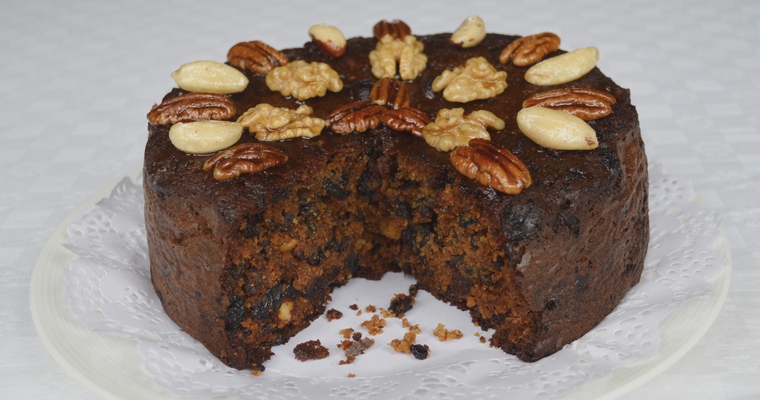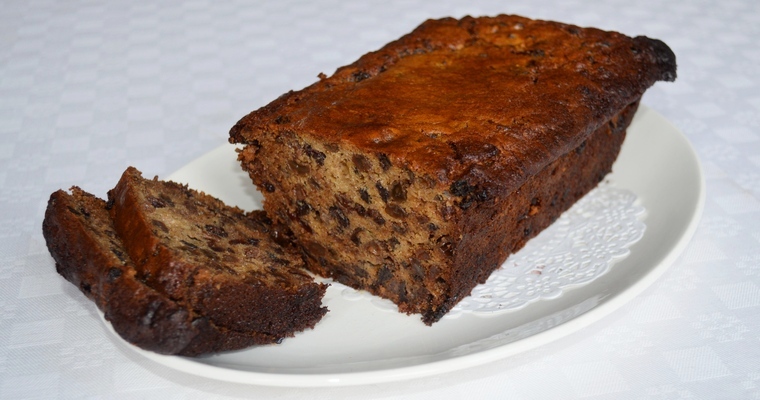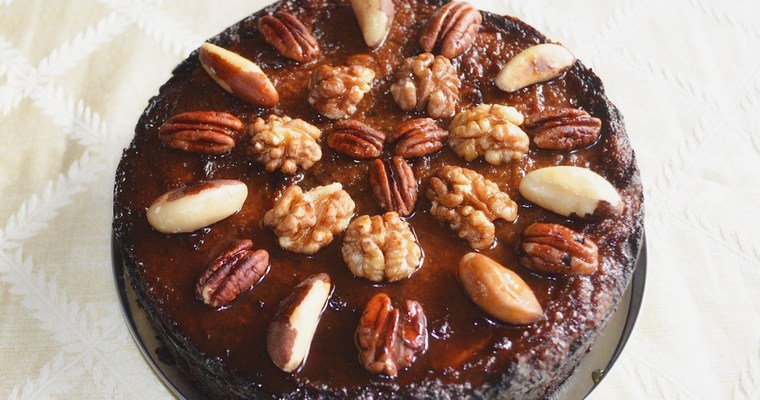Rich, fruity Christmas pudding, steamed the traditional way. This Dairy-free, Gluten-free and Paleo recipe is made with ground almonds, suet and honey.
| Skip straight to the recipe |
01. What is Christmas Pudding?
Christmas pudding is like a richer, denser and stickier version of fruit cake. It is traditionally eaten in Britain on Christmas Day, served warm in a bowl with a generous slick of cream or brandy butter. It is made from an assortment of dried fruit (usually 1lb / 450g), chopped nuts, citrus peel, aromatic spices and a healthy glug of brandy or sherry. The exact quantities vary, as there is no definitive recipe. Typically, families have their own recipe, handed down through the generations. Unfortunately my grandmother’s recipe came from the wartime when luxury food items were scarce, so it includes some rather unexpected ingredients like grated carrot! The structure of the pudding is provided by a small amount of white breadcrumbs and flour, while beef suet provides the glistening fat. Once the heavenly-scented ingredients have been mixed together in a giant bowl, it is spooned into a pudding basin and gently steamed for several hours. It is then left to age for at least a month, allowing the flavours to develop. When it is ready to eat, it needs to be gently warmed by steaming for a couple of hours until heated through.
02. How are Christmas Puddings cooked?
Steamed puddings are a British invention, with a pedigree stretching back to the middle ages. Closed cooking ranges, in the form of cast-iron stoves, did not become a fixture of domestic kitchens until the latter half of the nineteenth century. Before this, cooking was done in small ovens built into the side of the chimney breast, or in cauldrons suspended over open fires. The cuisine of the day reflected the absence of hot ovens with reliable temperature gauges and affordable cookware. This meant that steamed puddings rather than baked cakes were made in the home, as they could be cooked on an open fire. The stiff mix would be spooned into a damp, floured cloth, and then shaped into a sphere before gathering up the corners and tying into a bundle. The pudding could then be immersed in a pan of boiling water and cooked for several hours, without danger of drying out or scorching. Because leavening agents like baking soda and eggs whites require dry heat, suet is used to aerate pudding with a network of tiny air bubbles.
03. What is suet?
Suet is the hard fat that surrounds the kidneys in cattle. Suet is used instead of regular muscle fat because it is flavourless. You should be able to get suet from a good butcher. In its raw form, suet contains membranes and other matter that needs to be removed before it can be used. Your butcher should render the suet for you, so that you are left with a block of pure fat. This should be treated like meat and stored in the fridge. The suet then needs to be shredded into small shavings before it can be used – you can do this using a grater. This is because suet has a high melting point, and chopped cubes will not fully melt and incorporate into the mixture during cooking. You can buy pre-shredded suet from a butcher, or packaged suet from a supermarket, which has been dehydrated so that it can be stored in the cupboard. However, in processed suet, the shreds of fat are coated in flour to stop them from clumping together. This a problem for people who are gluten-intolerant and, more generally, the additional flour will affect the results of the recipe.
04. Why is suet used instead of butter in Christmas Pudding?
Butter is usually preferred for baking, as it adds richness and flavour. However, animal fat is always used in steamed puddings instead of butter because it has a higher melting point. This means that the pudding batter has time to cook and set around the lumps of suet, before they too cook and dissolve. This leaves behind a network of air bubbles, resulting in a light pudding that is moist rather than greasy. Suet also keeps better if the pudding is aged in the traditional way. Suet is 100% fat, whereas butter is only 80% fat – it is actually an emulsion of butterfat and water, stabilised by milk proteins. This means that puddings made with suet keep for longer, as water encourages the microbial action that causes food to spoil. Because suet has a high melting point, it congeals at room temperature. This means that steamed puddings are best eaten warm. If you slice this pudding when it has cooled, it is perfectly tasty but you may see unsightly specks of hard white fat.
05. What gluten-free flour can you use to make Christmas Pudding?
Wheat flour is strong, elastic, absorbent and neutral-tasting. Christmas Pudding is well suited to gluten removal, having a strong and compact shape, moist and succulent ingredients and aromatic spices that mask more heavily flavoured gluten-free flours (see this guide to gluten-free flours for more information). Ground almonds make an excellent gluten-free replacement, as the sweet and nutty flavour complements the other ingredients. However, there is a danger that the pudding may become crumbly and fall apart if the sticky gluten proteins are removed. Egg replicates the sticky properties of gluten, as the proteins contained in the whites coagulate to form a solid mass when heated. A paste made from dates and prunes also acts as a binder and a moistener. Honey is physically sticky, which also helps hold everything together, and attracts water to keep the pudding moist. This means that the purpose of the breadcrumbs to wick up and retain moisture is superseded, so these can now be removed.
06. How long do Christmas Puddings keep for?
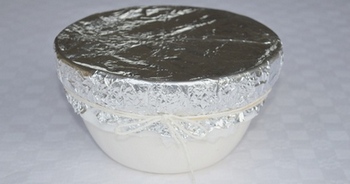
Christmas Puddings are traditionally made on the Sunday before Advent Sunday – about 4 weeks before Christmas. This Sunday came to be known as ‘Stir-up Sunday’. Christmas Puddings actually improve with ageing, as the flavours have time to develop and meld. The suet, sugar, acidic fruit juices and alcohol all act as natural preservatives. So the makers of luxury Christmas Puddings will often make them a year ahead, meaning that the Christmas Pudding that is served on Christmas Day will be 13 months old. You should store your Christmas pudding in a cool, dry place like a cupboard.
Tips & Tricks
- Use unwaxed oranges and lemons – you will be eating the skin. If using waxed ones, pour over boiling water to melt the wax, then scrub off under a cold running tap using a vegetable brush.
- Use medjool dates – these are juicier, so will blend into a paste easier. If using dried dates, soften by steeping in boiled water for 10 minutes then draining.
- Heat the brandy before setting alight – cold alcohol will not ignite because alcoholic vapours are needed.
Ingredients
macerated fruit:
- 200g currants
- 125g raisins
- 125g sultanas
- grated zest of 1 lemon, unwaxed and organic
- grated zest of 1 orange, unwaxed and organic
- 1/2 cup (120ml) brandy (or sherry)
paste ingredients:
- 1/4 cup (60ml) orange juice (about 1 small orange)
- 200g ready-to-eat prunes
- 200g medjool dates
remaining ingredients:
- 1 small cooking apple (160g), peeled, cored and finely chopped (I used a Bramley)
- 40g blanched whole almonds, chopped
- 1/2 teaspoon ground nutmeg
- 1/2 teaspoon ground cinnamon
- 1/4 teaspoon ground cloves
- 2 large eggs, lightly beaten with a fork
- 1/3 cup (90g) honey
- 1 1/2 cups (135g) ground almonds
- 130g beef suet, grated (vegetarian, gluten-free suet is fine too)
for greasing the pudding bowl:
- olive oil
to serve:
- ladleful of brandy
Instructions
- Macerate the fruit. Combine the currants, raisins, sultanas, zest and brandy in a large mixing bowl. Give the mixture a good stir with a large metal spoon. If you have time, cover and leave to soak for 24 hours, stirring occasionally to turn over the fruit.
- Make the prune and date paste. The next day, stone the prunes and dates and place in the small bowl of a food processor. Blitz to a paste, pouring in some of the orange juice if the mixture needs loosening (if you do not have a food processor, then finely chop and mince with the flat side of a heavy knife). Scrape the paste into the large mixing bowl, and pour in the remaining orange juice.
- Combine the remaining ingredients. Add the remaining ingredients. Give the mixture a really good stir to ensure all the ingredients are fully blended. The mixture will be very thick, but there’s no need to add extra liquid.
- Prepare the steamer. Take a large, deep-sided pan, and place a steaming basket at the bottom (if you do not have a steaming basket, scrunched up foil also works, or a tuna can with the top and bottom removed). This allows the heat to circulate evenly. Pour in just-boiled water from the kettle. Cover with a lid and leave to simmer under a medium-low heat while you prepare the pudding. This will allow steam to build up in the pan.
- Prepare the pudding bowl. Lightly grease a 2 3/4 pint / 1.6 litre pudding bowl with olive oil. Cut out a small circle of baking paper and use it to line the bottom of the pudding bowl. Spoon in the mixture and level off the top with the back of a wet metal spoon.
- Cover with a double layer of baking paper and tin foil, secured tightly to stop water from getting in and making the pudding soggy. To do this, cut a square of baking paper from the roll. Fold in half diagonally to create a triangle, then fold twice again in the same way. Trim the outer edge in a curve, to create a circle when opened out. Repeat with another square of baking paper and a square of tin foil. Place the baking paper circles on top of the bowl, and hold in place with a rubber band placed under the lip of the bowl. Repeat with the tin foil, first scrunching snugly to the sides of the bowl. As rubber bands are prone to perishing in heat, secure with string as well – the best way to maintain tension is to wrap around three times, tying a simple single knot at each cross over, then securing with a tight double bow. Trim the excess paper and foil. Traditionally, a length of string is tied across the top to create a handle, but I find oven gloves work well enough for lifting the pudding out.
- Steam the pudding. Place the pudding bowl on top of the steaming basket. The water should come halfway up the bowl, so top up with just-boiled water from the kettle if necessary, gently pouring away from the sides of the pudding bowl. Cover, and simmer for 6 hours. Check the water level every hour, topping up if necessary. Remove when done using oven gloves.
- Once cooled, remove the baking paper and foil covers and replace with fresh ones. Store in a cool, dry place for up to 13 months.
- Serve the pudding. When ready to eat, steam the pudding for 2 hours to reheat. Remove from the pan and leave to stand for at least 20 minutes, covered with a tea towel to keep warm. If short on time or gas rings, try microwaving on a low setting until warmed through and a metal skewer inserted in the centre comes out hot (removing the foil covering first!).
- Remove the baking paper and foil, and run a palette knife around the side of the bowl. Place an inverted plate on top. Flip the whole lot onto the plate, then gently shake the pudding bowl to loosen it and remove.
- Warm a ladleful of brandy over a flame – about 30 seconds over a gas ring (if you do not have a gas hob, heat in a saucepan). Pour the brandy over the pudding and set alight.

